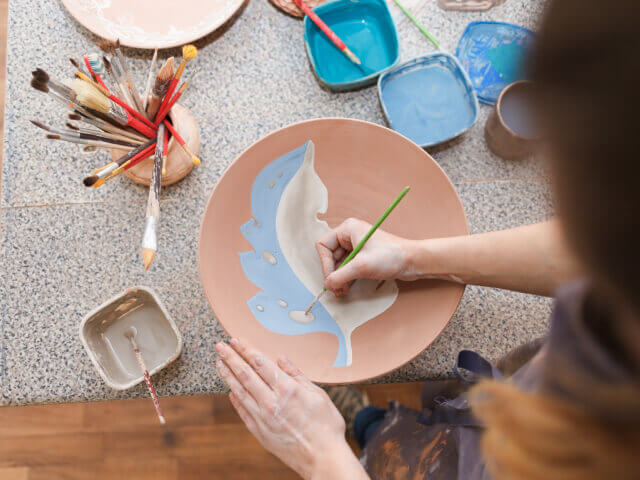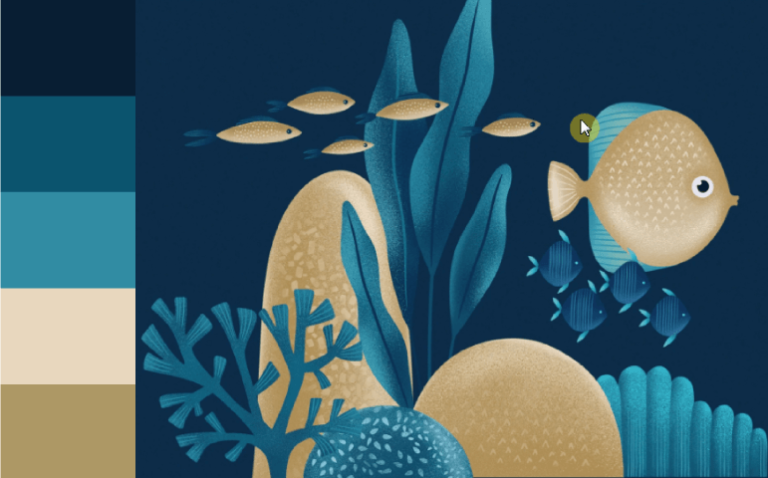8 tips to be more creative

No manual teaches how to be more creative. Mastering creativity is challenging because it lacks a defined set of rules for achieving it.
You can find numerous tips and step-by-step guides on the internet (including in this post) on what to do, but no strict rules exist.
Nevertheless, there are suggested paths forward and proposals for you to practice and determine their effectiveness.
No one knows better than yourself what works for your life, profession, and daily routine.
Creativity is as abstract as the journey toward achieving it. However, there are ways to assist you in increasing your creative perception of the world and enhancing your ability to generate new ideas.
Here are eight tips for you to apply today and foster your creativity.
1. Don’t fear failure
We all experience fears and tend to avoid situations that might embarrass us or others. However, these fears can significantly hinder our ability to unleash our creativity and produce something new and remarkable.
Taking risks and initiating new endeavors becomes more challenging when you fear failing.
Unconsciously, avoiding new experiences shields us from adverse outcomes. However, this thinking only limits our potential as artists or creators.
Being stagnant is the result of not embracing new opportunities. So, regardless of the final result, taking action is preferable to doing nothing.
Embrace the mantra: “Done is better than perfect.”
2. Keep a notebook to jot down ideas
Is your mind constantly buzzing with ideas? You’re not alone. Ideas are abundant and regularly pop into our minds.
Unfortunately, our brains struggle to store these spontaneous thoughts that come to us while waiting in line at the bank, riding the bus, heading home, or hanging out with friends at a bar.
That’s why it’s essential to have a small notebook on hand to jot down every idea that comes to mind.
Don’t be too picky. Write down even the ideas that seem to have little potential at first.
For those who prefer a more tech-savvy or practical approach (carrying around a pen and paper isn’t always convenient), there are several mobile applications that serve the same purpose of effectively capturing ideas and thoughts.
One excellent, user-friendly, and comprehensive app is Evernote. It allows you to record text, audio, and images and save photos taken with your smartphone camera.
Starting somewhere is crucial when you’re beginning a new project or trying to figure out what to do. Now is the time to let go of perfectionism. Jot down the initial ideas that come to mind, no matter their nature. Taking action is the first step. If you have nothing, then you have nothing to lose.
Recording ideas as they come can be incredibly helpful, providing fresh perspectives that might not be apparent at first glance.
3. Don’t worry about the idea of perfection
No one is perfect, so why should your work be?
There’s no need to reinvent the wheel. All great artists throughout history started somewhere and made significant progress toward their masterpieces.
When you’re trying to come up with a creative idea, it can be tempting to aim for immediate perfection. However, remember that perfection is an illusion! There’s no such thing as a perfect idea right from the start.
Being overly demanding and perfectionistic can impede your creativity. Striving for perfection in your work can hinder the emergence of the best ideas.
Start with the simple.
4. Expand your sources of inspiration
When you’re looking for inspiration, it’s easy to fall into a routine. You might constantly visit the same websites, watch the same YouTube videos, or listen to the same podcasts. However, by doing so, you’re likely limiting yourself to similar ideas and approaches.
Diversifying the places, mediums, and media from which you draw inspiration is essential for discovering new ideas.
In the digital and online realm, there are countless sources to inspire you. Finding online diversification is relatively easy.
But how about stepping away from the online world and seeking inspiration in real life? Books, museums, exploring new places, and engaging with different people from your usual circle can provide surprising sources of inspiration.

5. Get out of your comfort zone
This topic is related to the previous one but goes beyond just diversifying your sources of inspiration. It applies to all aspects of life.
The key is to venture beyond your comfort zone and into the unknown. Yes, it might feel uncomfortable at first, but once you learn to navigate uncharted waters, you’ll be amazed at how much more creative and innovative you can become!
If you’re an illustrator used to a particular drawing style or specific techniques, why not try something new?
You don’t have to abandon what you’ve done before, but stepping out of your comfort zone and embracing new and challenging experiences can spark fresh ideas. It might even bring a new twist to your established practices.
Today, there are thousands of high-quality courses and tutorials available on the internet. Some are free, while others are reasonably priced. Pick one that is unfamiliar to you, one that challenges and piques your interest. Try something new and step out of your comfort zone.

6. Challenge yourself to come up with 100 ideas for a project
Writing down whatever comes to mind boosts your creativity. This process is called brainstorming, and it’s a great way to stimulate your creative flow and generate ideas you might not have considered before.
For example, when brainstorming ideas for a project, aim to jot down as many diverse ideas as possible. Challenge yourself to list 100 ideas, concepts, or words related to your project.
If you find it difficult to think of something, write down whatever comes to mind, no matter how silly or insignificant it may seem. The key is to let the ideas flow.
Once you’ve noted these ideas, analyze them and determine which ones are worth exploring further. Narrow down your selection until you have the most promising ideas for your intended purpose.
To take this exercise to the next level, try putting yourself in someone else’s shoes during brainstorming. For instance, if it’s a fashion design project, imagine yourself as someone unfamiliar with fashion design. Consider what kind of products, services, or ideas would be valuable to someone new to this field.
7. Take action instead of staying in the realm of ideas
Imagining and generating countless ideas for a project or artistic creation is part of the creative process. However, ideas need to materialize in the real world. You have to take action to express what exists only in your mind.
However, ideas (as many creators have experienced) don’t manifest themselves in a clear and organized manner. Often, they are a chaotic mix of images born from our imagination. It’s easy to feel overwhelmed by this whirlwind of disjointed information in our minds.
Even if they seem confusing, translating these ideas into practice is an excellent way to start planning a more coherent and organized path.
And what better tool for this than a sketchbook? Your sketchbook is the initial, practical manifestation of your ideas.
Seeking courses that provide suggestions and experimentation methods aligned with your interests can also greatly assist you in putting your creative ideas into practice and organizing them. So, get to work!
8. Set rules for yourself, then break them
In this context, rules do not aim to limit your ideas or creative potential. Too many rules can sometimes stifle creativity. However, setting some boundaries can be a tool to encourage you to approach creative activities from a different perspective.
For example, if you’re an illustrator, challenge yourself to create illustrations using only one type of pencil or a regular ballpoint pen. Once you’ve explored this approach for a while, break the rule. Try using ink, charcoal, or any other medium to continue the drawing.
Another example is when writing a story. Set a rule such as “write only in the first person,” “use only dialogue,” or “construct sentences using only seven words.” Then, when you feel stuck or too restricted, break those rules!
To boost your creativity, take a fresh perspective on the world
Being more creative doesn’t require a unique talent or extra skill. It’s a matter of practice and embracing novelty. A multitude of new and unique ideas already resides within our minds, often in a disorganized and chaotic manner.
Enhancing creativity involves allowing those ideas to flow freely without pressure, perfectionism, or constraints. Unleash the full power of your imagination and creativity, translating them into something tangible.
Experimenting and materializing your ideas on paper, notepads, or using a voice recorder to capture your thoughts are efforts to organize our creative minds.
It’s crucial to venture into new experiences and embrace the unfamiliar to facilitate this flow of creative ideas.
Therefore, liberate your imagination and start nurturing the creative side within each of us.


